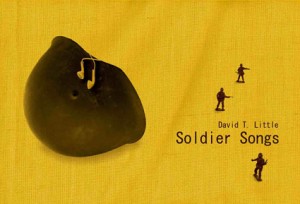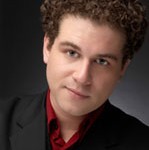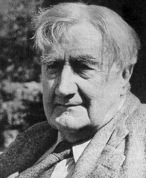This is just a friendly reminder about our upcoming concert next Wednesday, September 17th. Sequenza21 and Music On MacDougal are teaming up to present a concert of early Minimalism in celebration of the 50th anniversary of the genre.
M50: Minimalism Turns Fifty
When: September 17th, 2008 at 8:00 PM
Where: The Players Theatre, in Greenwich Village, Manhattan
115 MacDougal Street, New York, NY 10012
Tickets: $20 (Student tickets $15 with Student ID) By Phone: 212-352-3101 or Online.
Program:
Steve Reich — “Piano Phase” (1967) (Version for two Marimbas)
Philip Glass — “Piece in the Shape of a Square” (1967)
Terry Jennings — “Piano Piece” (December 1958) and “Piano Piece” (June 1960)
Intermission
Terry Riley — “In C” (1964)
The concert is made possible in part by the support of Cold Blue Music, and by Bechstein, the official piano sponsor of Music On MacDougal.
See you there! Tell your friends! It’s going to be great, and you won’t want to miss it.
The BBC Proms is ongoing until the end of this week, the traditional Last Night at the Proms being on Saturday night. For me it all ended about a week and a half ago, but there are a number of things still to report on.
The Proms on August 19, given by the BBC Scottish Symphony Orchestra, conducted by Ilan Volkov, which was a collaboration between the BBC and IRCAM, featured the music of Jonathan Harvey, a long time associate of IRCAM. It included the first performance of Speakings, a major work of Harvey’s which had been commissioned by the BBC, IRCAM, and Radio France and which was also the final product of a three-year association between Harvey and the orchestra. The concert was in three parts, divided by two intermissions, each one of which consisted of a relatively brief piece for tape or electronics, followed by a larger scale instrumental work. The first contained Harvey’s Tombeau de Messiaen for piano and digital audio tape, followed by Messiaen’s Concert á quatre, the second Harvey’s Mortuos plango, vivos voco for eight channel tape, followed by Speakings for orchestra and live electronics, and the third Varèse’s Poème électronique for magnetic tape and Déserts for fifteen wind instrument, percussion and magnetic tape.
(more…)
John Adams – On the Transmigration of Souls
Michael Gordon – The Sad Park
Dennis Báthory-Kitsz: The Key of Locust
Phil Kline – Vigil
Elodie Lauten: S.O.S.W.T.C
 There’s been a certain amount of breathless reportage about a new study linking personality and musical taste done by Adrian North at the Heriot-Watt University in Edinburgh, UK. It’s hard to be sure where things went awry, but by the time the media got a hold of the results they were badly exaggerated.
There’s been a certain amount of breathless reportage about a new study linking personality and musical taste done by Adrian North at the Heriot-Watt University in Edinburgh, UK. It’s hard to be sure where things went awry, but by the time the media got a hold of the results they were badly exaggerated.
The BBC, for instance, says the research “suggested classical music fans were shy, while heavy metal aficionados were gentle and at ease with themselves.” North himself, interviewed by the BBC, makes similarly bold claims: “If you know a person’s music preference you can tell what kind of person they are, who to sell to. There are obvious implications for the music industry who are worried about declining CD sales. One of the most surprising things is the similarities between fans of classical music and heavy metal. They’re both creative and at ease but not outgoing.” These statements imply a very strong effect—the sort of effect that should mean that if you know somebody’s musical taste you can make fairly accurate predictions about his or her personality.
If you’re starting to be skeptical, you’re not alone. Jonathan Bellman, at Dial M, has a pretty good rant you might want to read.
Knowing that the media is notoriously bad at accurately reporting scientific findings, I wanted to know what we’re really talking about here, so I e-mailed Professor North with a few questions.
 How does it sound – a double concerto written by a musician weaned on Beethoven, salsa, Stravinsky and Bulgarian folk music? In short – like nothing else!
How does it sound – a double concerto written by a musician weaned on Beethoven, salsa, Stravinsky and Bulgarian folk music? In short – like nothing else!
The Danish composer Anders Koppel (b. 1947) is himself. “My music consists of the life I have lived,” is as close as he gets to a definition of his style.
Anders Koppel grew up with music all day long. His father, Herman D. Koppel, was one of Denmark’s leading composers and pianists, and worked in the living room at home. Anders and his siblings were eye-witnesses to all aspects of the musical creative process and got to know about the smallest components of music. As adults all four became some of the most prominent Danish musicians.
The key words for Anders’ music are energy, collectivity and festivity. After one of the most versatile careers in Danish music, which still includes intense improvisations on Hammond organ, Anders Koppel is now concentrating on writing classical solo concertos. He has written over 20 since the mid-1990s, most recently also a couple of double concertos.
On two CDs from Dacapo you can hear Anders’ mixture of vital energy and classical forms. On one CD his son Benjamin is the soloist in his Saxophone Concertos 1 and 2, and on the other you can hear Anders Koppel’s double concertos: one is for violin and accordion with a definite touch of tango. The other is for saxophone and piano and drags Beethoven along to a nightclub. There are inserted improvisations that give the music freedom and personality – a good indication of the attitude of this congenial composer, who was one of Denmark’s best known hippies in the 1960s and is still a passionate representative of breadth of taste and a zest for life.
 He’s been on my list for a while now, to make famous (ha ha) as an S21 “click pick”. But before I get the chance to feature him, Huck Hodge goes and wins this year’s Gaudeamus Prize:
He’s been on my list for a while now, to make famous (ha ha) as an S21 “click pick”. But before I get the chance to feature him, Huck Hodge goes and wins this year’s Gaudeamus Prize:
At the final concert of the International Gaudeamus Music Week 2008, which took place in Amsterdam from 1 to 7 September, the Gaudeamus Prize was awarded to the American composer Huck Hodge (1977).
The Gaudeamus Prize, an award of 4,550 Euros, is intended as a commission for a new work to be performed at the next edition of the International Gaudeamus Music Week. Hodge received the prize for Parallaxes, a composition for ensemble, performed on September 3 at the “Muziekgebouw aan ’t Y” by the Asko|Schönberg Ensemble conducted by Bas Wiegers.
His site will fill you in on his work, with plenty of good listening. From his C.V. it looks like he’s taking a post up in my old hometown of Seattle, teaching composition at the University of Washington. Bully for them, and bravo to Huck.
 Sonny Rollins, aka the Saxophone Colossus, turns 78 today. Check out the multimedia celebration at his web site. This year’s focus is on his fans, his web visitors, his greatest inspiration, Coleman Hawkins, and an extraordinary new recording.
Sonny Rollins, aka the Saxophone Colossus, turns 78 today. Check out the multimedia celebration at his web site. This year’s focus is on his fans, his web visitors, his greatest inspiration, Coleman Hawkins, and an extraordinary new recording.
Sonny doesn’t seem to be slowing down. The year began with his 50th Anniversary Carnegie Hall concert. He’s been around the world, all over the US, Europe, and Asia (Japan, Korea, Singapore, Australia). Next month, two new releases celebrate his remarkable creativity, Sonny Rollins in Vienne, his first DVD, and a compilation of live performances, Road Shows, Volume 1.

Watching the gritty HBO series called Generation Kill about a platoon of young Marines at the beginning of the invasion of Iraq, it struck me again how ambivalent music’s relationship to warfare really is. Sure, one end of the music-as-weapon spectrum runs through the high-brow pacifism of Britten and Michael Tippet and the I ain’t a’marchin’ anymore populism of Phil Ochs. All we are saying is give peace a chance.
But on the other end lives the beat of tribal drums and primitive rhythms; the ritualistic mix of noise and fire and spirits that sends warriors off on a blood-letting frenzy. There’s also martial music, which is a form of canned nationalism meant to build pride and a sense of exceptionalism. In Generation Kill, the young Marines head out in their Humvees singing–in appropriate falsetto–Minnie Riperton’s “Lovin’ You.” A children’s chorus of young men determined to free the world of the Haj and fags and liberals and to prove to themselves and their platoon mates that they are not afraid of death.
 The talented young composer David T. Little must have had something like this ambivalance in mind when he wrote Soldier Songs, an evening-length multimedia performance piece, that will be staged Saturday at 7 pm and Sunday night at 6 pm at Le Poisson Rouge, 158 Bleecker Street. Comprised of 11 songs with an original Libretto by the composer, the work combines elements of theater, opera, concert music, rock and animation to explore the dichotomy between war and modern society through the abstract character, the Soldier.
The talented young composer David T. Little must have had something like this ambivalance in mind when he wrote Soldier Songs, an evening-length multimedia performance piece, that will be staged Saturday at 7 pm and Sunday night at 6 pm at Le Poisson Rouge, 158 Bleecker Street. Comprised of 11 songs with an original Libretto by the composer, the work combines elements of theater, opera, concert music, rock and animation to explore the dichotomy between war and modern society through the abstract character, the Soldier.
Soldier Songs was first presented in 2006 as a song cycle by the Pittsburgh New Music Ensemble and had its orchestral premiere as part of New York City Opera’s VOX Festival in 2008. The current Beth Morrison Projects production is the first fully staged presentation of this dramatic work and features a splendid creative team: singer David Adam Moore, members of the ensemble Newspeak, conductor Todd Reynolds, director Yuval Sharon, set/costume designer Chisato Uno, lighting designer Lucas Krech, and animator/video designer Corey Michael Smithson.
 One of the threads of this year’s Proms is a survey of the works of Ralph Vaughan Williams in commemoration of the fiftieth anniversary of his death. On August 26, which was the actual date of his death, the survey climaxed with an all-Vaughan Williams concert by the BBC Symphony, conducted by Sir Andrew Davis. The first work on the concert, the justly celebrated Fantasia on a Theme of Thomas Tallis; its performance, although maybe not exactly peremptory, was certainly restrained and cool, rather than as impassioned as one might have wished it to be. It was followed by the ballet score Job, with whose performance one could not argue. My own feeling about Job is that even though there is much very beautiful music in it, it is a little looser in construction and maybe a little more general in expression that the tightly constructed and closely argued symphonies, and that this is a, for lack of a better word, weakness in the piece.
One of the threads of this year’s Proms is a survey of the works of Ralph Vaughan Williams in commemoration of the fiftieth anniversary of his death. On August 26, which was the actual date of his death, the survey climaxed with an all-Vaughan Williams concert by the BBC Symphony, conducted by Sir Andrew Davis. The first work on the concert, the justly celebrated Fantasia on a Theme of Thomas Tallis; its performance, although maybe not exactly peremptory, was certainly restrained and cool, rather than as impassioned as one might have wished it to be. It was followed by the ballet score Job, with whose performance one could not argue. My own feeling about Job is that even though there is much very beautiful music in it, it is a little looser in construction and maybe a little more general in expression that the tightly constructed and closely argued symphonies, and that this is a, for lack of a better word, weakness in the piece.
The second half of the concert consisted of Serenade to Music, a short work setting an excerpt from The Merchant of Venice written to celebrate the fiftieth anniversary of the conducting career of Henry Wood, the founder of the Proms, and the Ninth Symphony. Serenade to Music was performed, as it was originally intended, by sixteen singers. It seems to me to be a just about perfect piece, and the performance was beautiful. The Ninth Symphony is a remarkable work. It holds a place in Vaughan Williams output somewhat analogous to that of the Requiem Canticles in Stravinsky’s; procedures and material from all earlier periods of his career appear, but both refined and, due to their different contexts, transformed into something new but with enormous added depth and expressive resonance. Each of the movements is the product of an extraordinarily original concept. In the first sonata form movement, a tune played by the clarinet accompanied by the harp, followed by a short trio for the clarinets, introduces the second theme; at the beginning of the recapitulation the clarinet tune returns played by the violin, leading directly to the second theme with a descant added on the flugel horn. From that point the events of the recapitulation proceeds in reverse order to that of the exposition, ending with the music for three saxophones that began the movement. In the second movement a solo line is alternated with a sort of court march which causes the line to fray and proliferate parts, leading to lyrical music for the full orchestra. The third movement is almost a mini-concerto for the saxophones, starting with perky soloistic lines accompanied by the snare drum and other percussion; that music develops into a fugue which is followed by a chorale that accelerates into very lively cascading music in close harmony that could have come from Duke Ellington and then dissolves, leaving only the ghosts of the accompaniment on the snare drum. The last movement is a complex two part form which begins quietly and contrapuntally and become a passacaglia somewhat like the last movement of the Fifth Symphony, but with more intensity. The whole work has a quality of intense urgency. (more…)